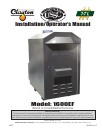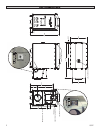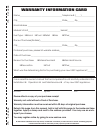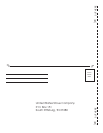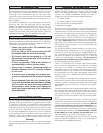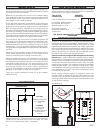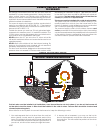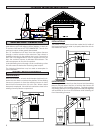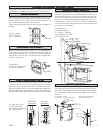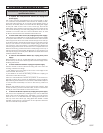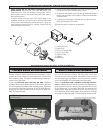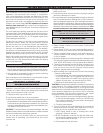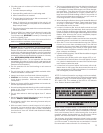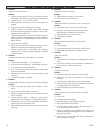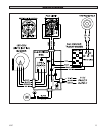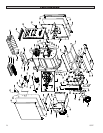
7USSC
CONNECTING HOT AIR DUCT
TO FURNACE
We strongly recommend that the hot air duct work be
installed by a home heating specialist. If doing the instal-
lation yourself, before you decide which installation will
best suit your needs, consult a qualied heating technician
and follow his recommendations as to the safest and most
efcient method of installation.
The warm-air supply-duct system shall be constructed of
metal in accordance with NFPA 90B, 2-1.1. The plenums
installed to the furnace be constructed of metal in accor-
dance with NFPA 90B, 2-1.3.
Outside the house you must use 10 inch galvanized pipe,
wrapped with weather proof, UV resistant insulation. The
12 inch return may be galvanized pipe and attached to
the home so as to not pressurize the home.
NEVER reduce the 10” hot air or the 12” return air as this
will result in restricted air ow and cause the furnace to not
operate properly.
NEVER draw cold outside air into the blower housing. By
doing so, the furnace’s heat chamber will not reach the
necessary temperature to heat the home.
The duct work should be designed so the external static
pressure does not exceed 0.2 inches water column while
developing air velocities of 600 to 1,000 feet per minute
in the main trunk duct and 400 to 600 feet per minute at
the registers. The heat outlet should never be less than ten
inches (10”) round or 79 square inches.
This furnace must be installed with a cold air return system.
The system must be a minimum of twelve inches (12”) to
readily transfer the cold air from the home back to the
furnace. If desired, a cold air lter box may be constructed
with a minimum opening of 225 square inches.
The warm-air supply outlet of the outdoor furnace must
not be connected to the cold-air-return inlet of an existing
central furnace because the possibility exist of components
of the existing furnace overheating and may cause the
central furnace to operate other than intended.
TYPES OF INSTALLATION
NO DUCT WORK INSTALLATION
Cold air return must be installed in all installations, even those without an air duct system. If you do not, the furnace will
not be able to heat the home. A lter should be installed in the cold air return. Furnace lters should be checked and
cleaned/replaced regularly.
When there is no duct system to connect the furnace to, keep the following in mind:
1. You must separate the hot air duct from the cold air
return. Ideally, locate each at opposite ends of the
home. This method will work well in homes that are built
on concrete slabs and should create a good air ow. If
you do not, air will not ow evenly through the home.
2. In homes with a basement, you may run the hot air
duct to the basement and pull the cold air return from
the main oor. This will create the perfect air ow since
hot air rises.



